Family dynamics: Calligraphy and Perfectionism
Visual artist based in Cape Town, with a particular interest in hand-written word, calligraphy and the materials and techniques associated with fine writing.
In the article below, Werner skewers perfectionism, and gives a how to address it. I love this. Some strong language (in case you prefer to be warned). Enjoy, apply, reuse.
Those of us who are attracted to calligraphy, we like a dirty fight. To be down in the mud with an adversary that punches well above our own weight-class. Hold that image in mind: do not ever be fooled by the gentle appearance of Calligraphy. She is pitiless. No one tells you this, but she does not necessarily fight her own battles. She wears you down slowly and then tags her associate, Perfectionism, to help finish you off.
This unfortunate link between creative work and wanting things to be faultless exists and is not talked about often enough.
Case study 1
The opening night of my first solo exhibition of calligraphy pieces. Empty snack plates, oily fingerprints on abandoned wine glasses, the gallery slowly emptying out. The show was well attended. Most of the pieces sold. A journalist wanted to do a piece on me for an influential newspaper. I made all of the money back that I’d borrowed from an already overextended credit card.
It was time to celebrate with friends. We went to a nice restaurant. Upon sitting down, I suddenly started feeling very ill. I had to excuse myself, got in an Uber, and went home. Funhouse distorted vision, bright lights, searing strobe-like stabs on the exposed lobes of my brain, all of this neatly encased by my skull, no escape. Tinnitus ringing like a hysterical bell announcing cold shivers, clattering teeth and projectile vomiting.
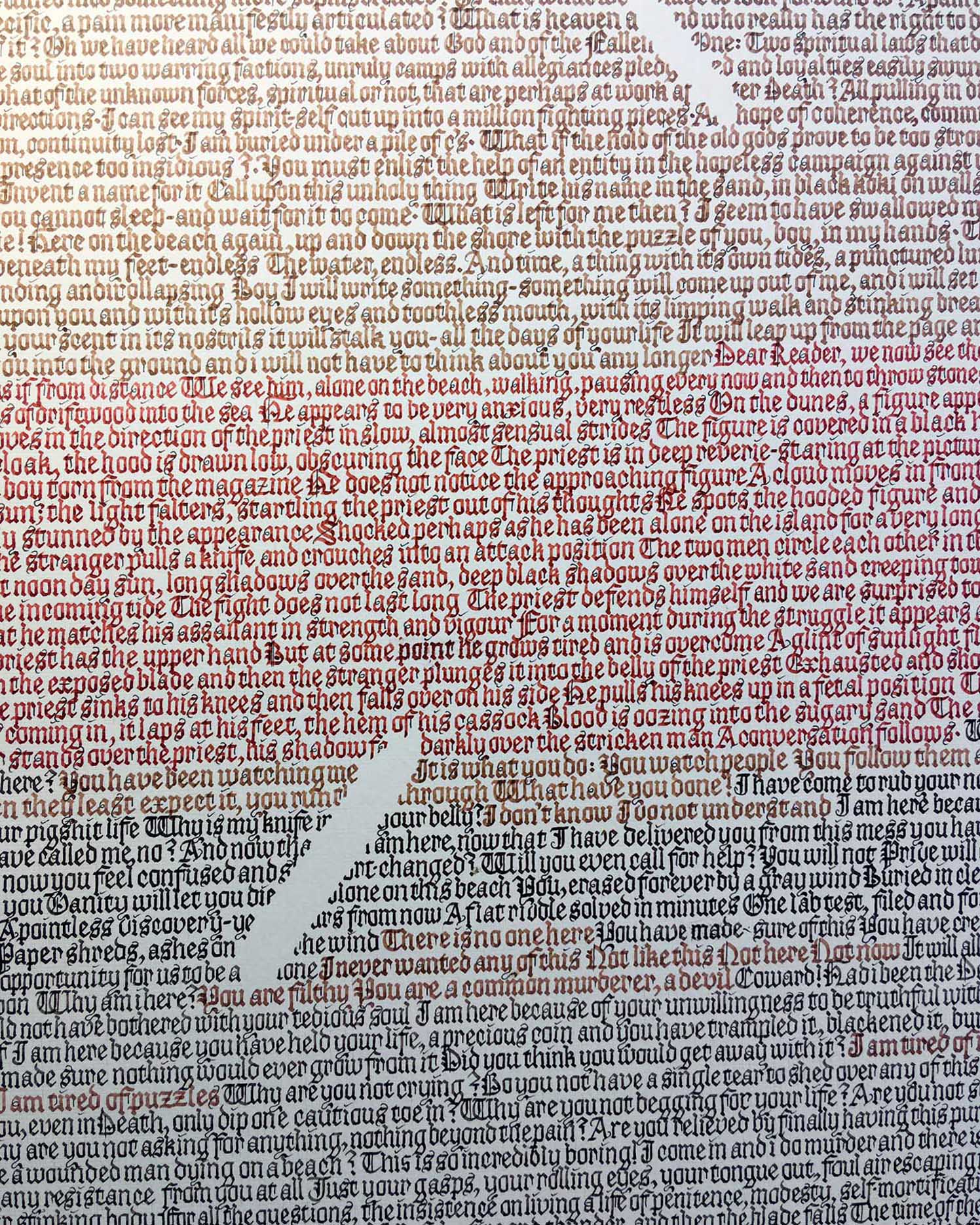
Detail from Contra Natura, Chapter 14: 'The Knife and the Beach', 297 x 420mm,
© Werner Ungerer, 2013
The body keeps the final score, they say. I was having a stress reaction. The stress was not so much about orchestrating the exhibition. The stress had its origins elsewhere: that silver-tongued whisper that speaks to you, even when you are in the middle of a beautiful achievement. It says, "Well, those were plebs off the street, luckily they do not know what good calligraphy is. Your stuff is pretty, sure. It just isn’t very good. The frames looked very cheap. The buyers will call in the morning after realising their mistake and return their purchased works. You are almost there, kid – if only you had pushed a little harder …"
The problem with this voice is that it has its fingers in all of your tender bits. It sits so very close to the truth. Where you can clearly identify its nature as a destructive thing is in its needling tone. Look for it. It’s usually there buried in the mix.
In any event, after this night, I completed a few commission works and packed away my calligraphy gear.
This is what Perfectionism looks like.
Case study 2
A few months after the exhibition, I received an invitation to speak at a speciality stationery store about my work.
After the talk, a young woman approached me. That thing happened when maker and viewer meet each other in an intimate, sincere space: the two of us in a delicious bubble, sharing ourselves openly. She cried when she told me that she worked very hard on her calligraphy, but that it remained stubbornly basic, wonky. Elegance simply would not enter her scriptorium. Her eyes were dark and red from crying. In that intimate space between maker and viewer, a channel opened between me and her and her despair destabilized me. We were both in the same state. I had nothing to console her with. Why had I accepted the invitation to talk about my work? There was no 'work'.
That talk was three years ago but I remember that girl with the red eyes. This is what Perfectionism looks like.
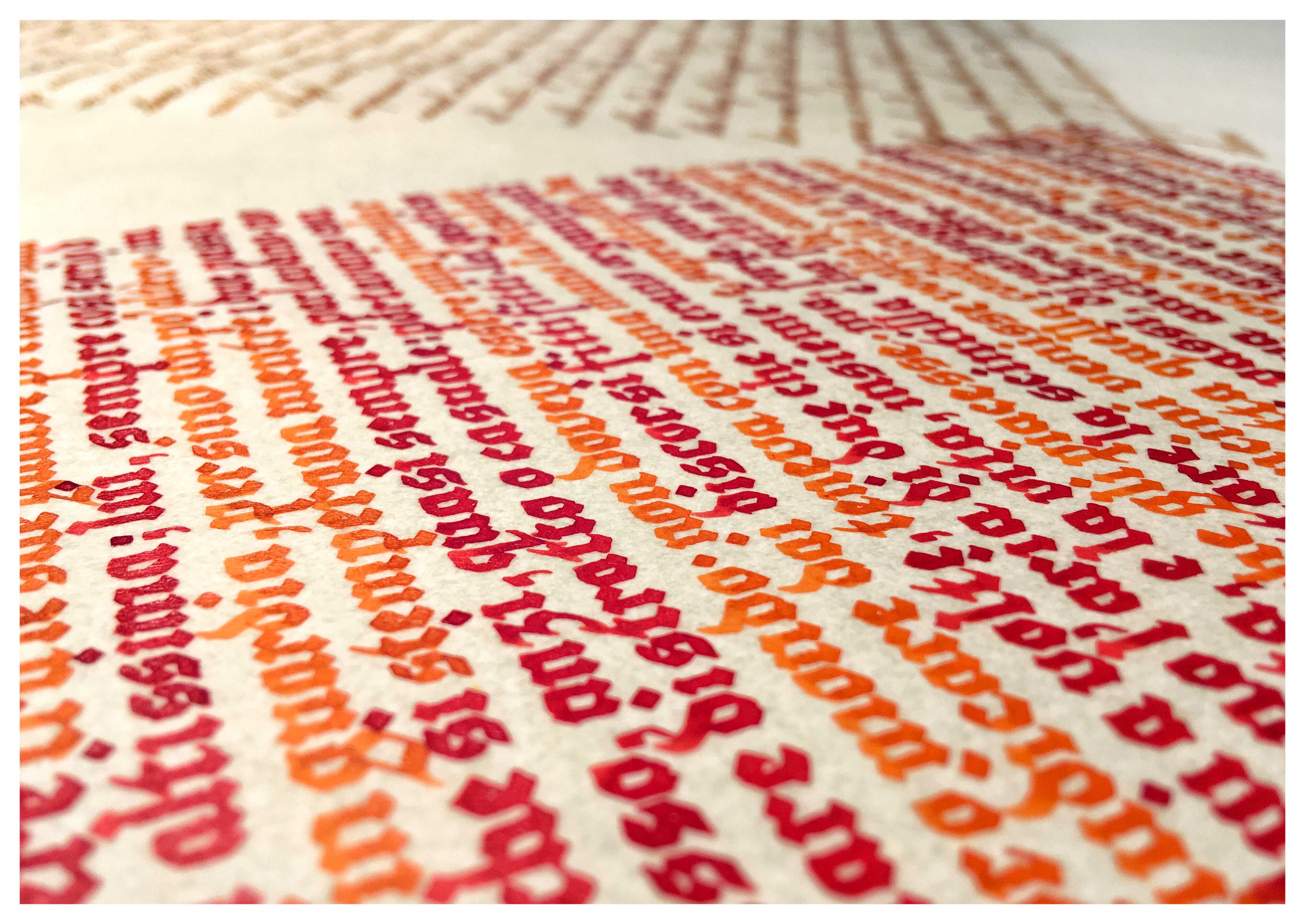
Detail from 'Of Lightness and Gravity' (commissioned work), approx 420 x 594mm,
© Werner Ungerer, 2019
Case study 3
What I see on the internet is endless 'worksheets' for 'Modern Calligraphy'. You know, the ones made by soccer moms with organised closets and well-behaved children. Perpetual summer girls, Etsy elites called 'Breanna' and 'Mackenzie'. You know their work: sunny, flawless, time-lapsed to death on Instagram: #blessed, #gratitude, rainbow vomit. You buy the 'worksheet' from them for a buck fifty and then you too can deface your Instagram by writing the 'Caitlin' hand like Breanna.
... This ugly little tirade, fun as it is, is also what Perfectionism looks like. Talking shit about other creatives and limiting your options by being snobbish.
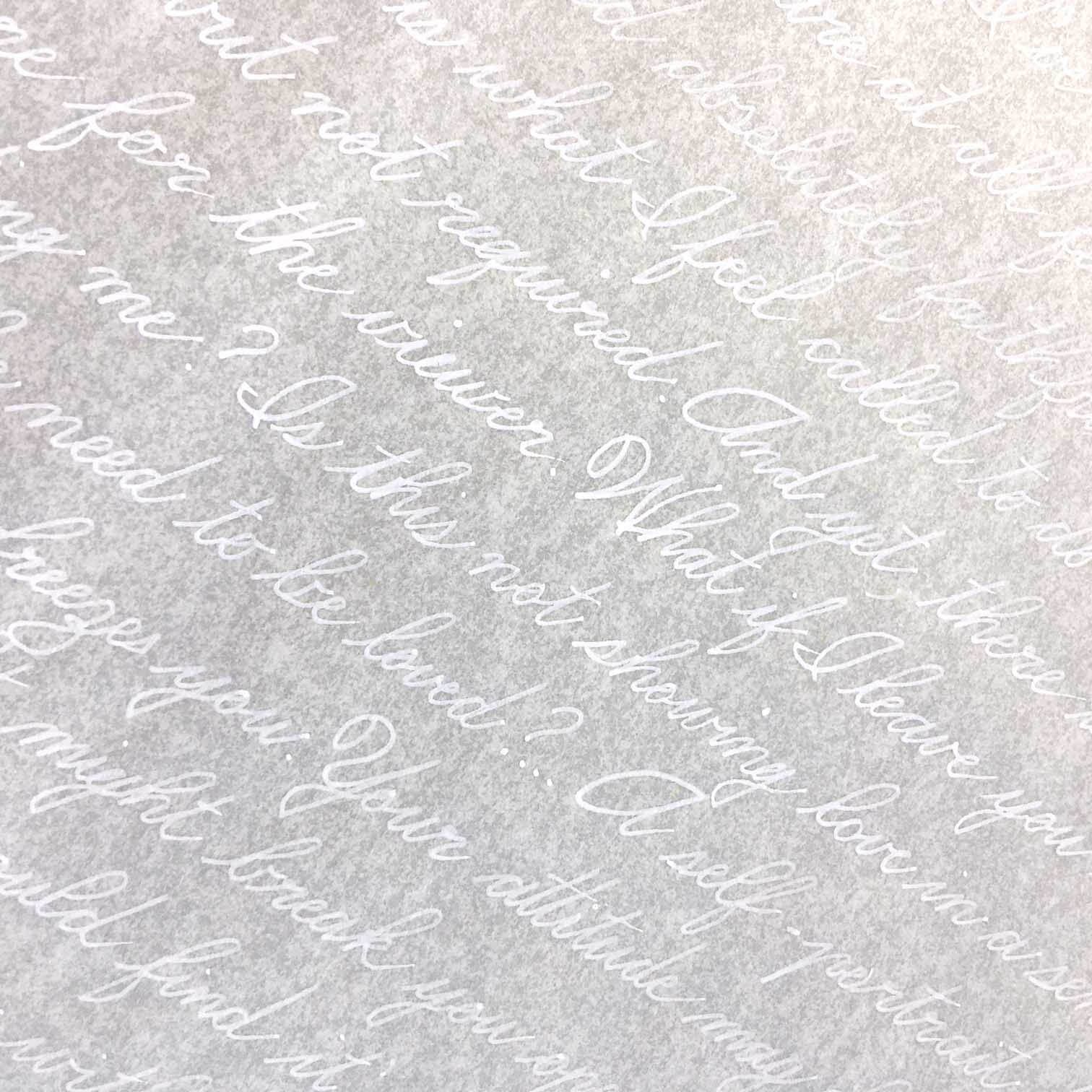
Detail from 'Self-Portrait in White', 594 x 841mm,
© Werner Ungerer, 2019
Case study 4
A poem of mine gets published in an anthology with other, well-respected writers. An invitation is extended for me to read my poem at the launch of the book. With the worst of the panic attack behind me, I receive word from my inner saboteur: "That is a terrible piece of writing. You’ve embarrassed yourself in front of serious writers." My copy of the anthology goes on the bottom shelf in my studio and I never look at it again.
I stop doing any creative work for two whole years. It is now fully in my body: the knowledge that mediocre is all I’ll ever be. "You, my friend, are a pipe-dreaming imposter," says my shadow. I stop doing yoga because I just cannot nail the vinyasa. By this stage, I am a pregnant elephant without any hope of ever delivering my triplets. Worse, I can hear the crying of my unborn, but I simply feel incapable of extending care towards them.
I find myself in line at the pharmacy. I leave with a neat little packet of pills. Each morning I take one with breakfast. My legs are restless, my jaw is tight.
The room where the support group meets is blank. The carpet smells like despair and dust. We are learning how to meditate. I am instructed to lie down flat on the mat while doing this – a special requirement for all the A-types … The therapist drones on about surrendering to a Higher Power.
"Fuck that," I think. "Surrendering? Have I not swallowed enough humble pie? I’m not surrendering anything to anyone."
This too is what Perfectionism looks like.
For eight weeks I attend my Mindful Recovery meetings. The Perfectionist says: "You are a cliché."
But
the meetings place in my hand an Excalibur. And the electricity of
this weapon goes into me and stirs in me a hunger of sorts. A hunger to
go pick a fight. One of the key principles of recovery is the idea of
Beginner’s Mind: "Sure," it says. "I don’t know yet, but I am curious to
see where this goes. This is all new and I have permission to suck."
So, with this principle firmly in mind, begins the slow unpicking of the dark strangling threads of Perfectionism.
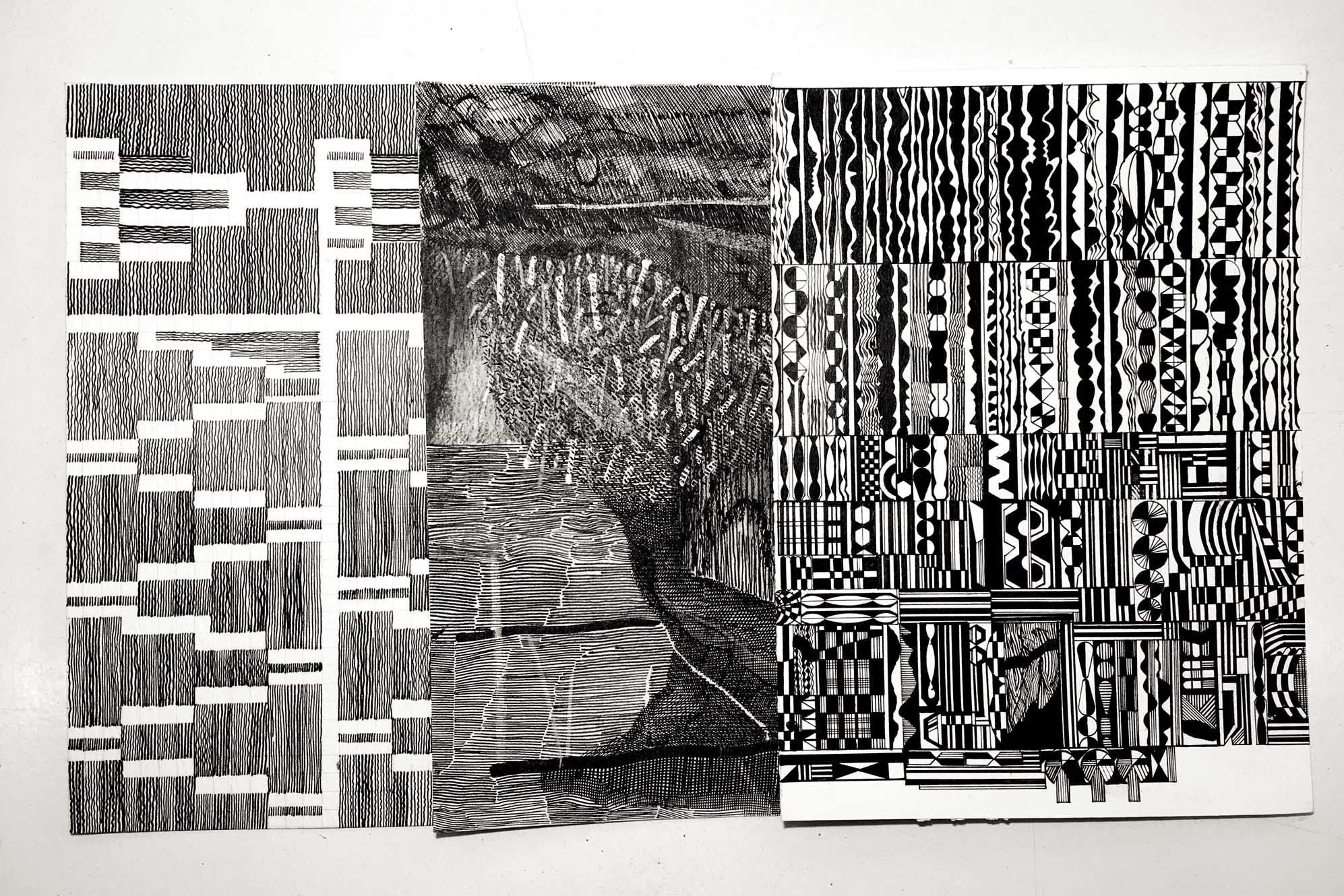
'Drawing', © Werner Ungerer
How do I make good calligraphy?
ONE
I know people are suffering as a result of not wanting to express themselves for fear of outcomes. They see what people post online, marvel at the seeming effortlessness of the work. It is enough to make one feel very small and silly for even trying. What concerns me is what happens when we don’t pursue our loves, when we don’t try, when we give in to the voices.
The creative impulse is propulsive,
restless. And if not pursued and expressed to its fullest extent, it is
corrosive beyond belief.
The following quote gave me so much comfort. It is in reduced form here:
"Nobody tells this to beginners. All of us who do creative work, we get into it because we have good taste. But there is this gap. For the first couple years you make stuff, it’s just not that good. It has potential, but it’s not good. But your taste, the thing that got you into the game, is still killer. And your taste is why your work disappoints you. A lot of people never get past this phase, they quit. Most people I know who do interesting, creative work went through years of this. We know our work doesn’t have this special thing that we want it to have. We all go through this. And if you are just starting out or you are still in this phase, you gotta know it's normal and the most important thing you can do is do a lot of work. It is only by going through a volume of work that you will close that gap, and your work will be as good as your ambitions. It’s gonna take awhile. It’s normal to take awhile.”
Ira Glass
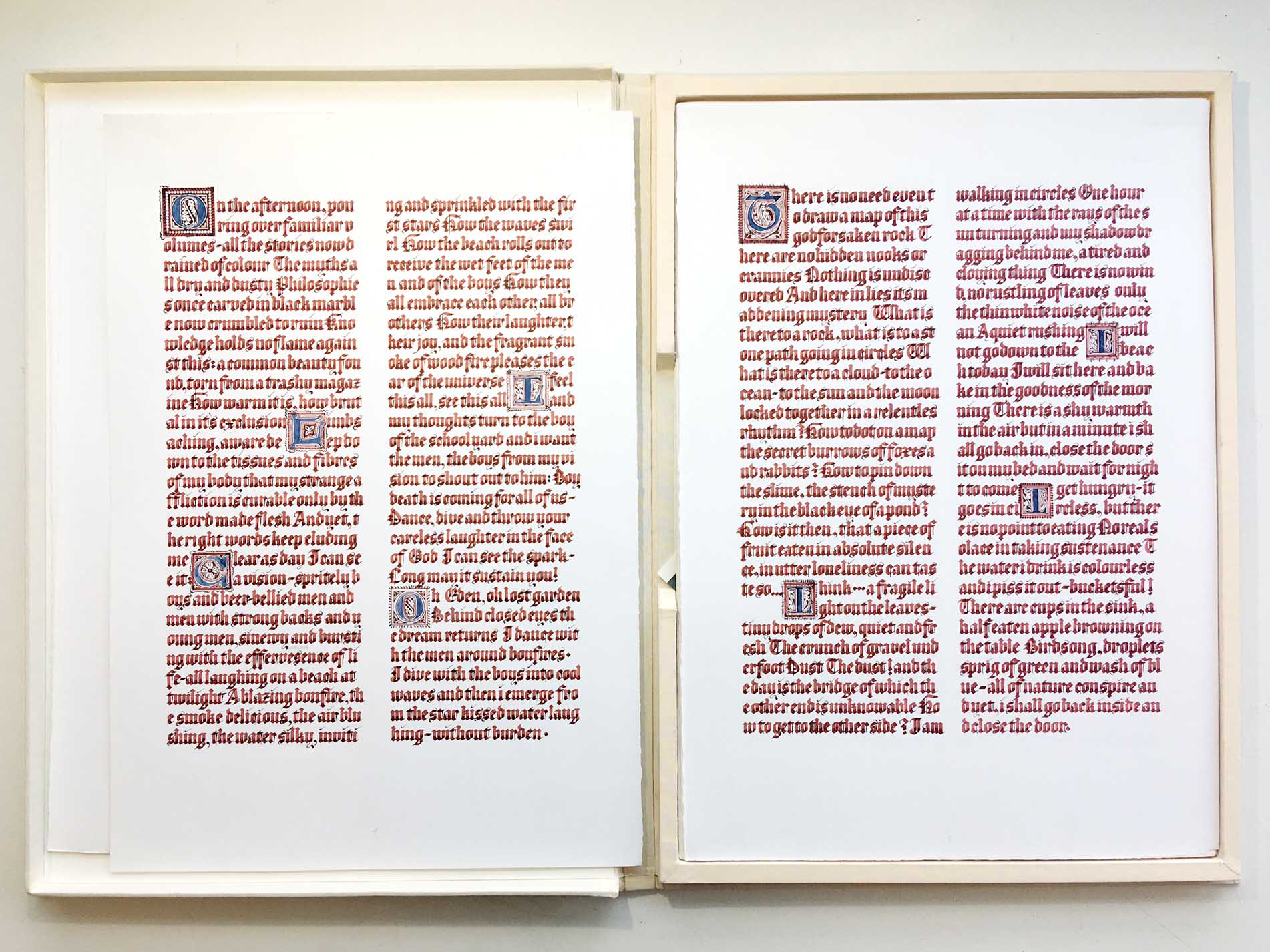
Pages from Contra Natura, each 297 x 420mm,
© Werner Ungerer, 2013
TWO
Stop watching other calligraphers on YouTube, Pinterest and Instagram. Stay away from time-lapse calligraphers. Why are they sharing their work in this way? What is the purpose? Is it instructive? Is it sincere sharing?
If you are serious about calligraphy, do proper study on your own for a while. Go into your room and work. All you need is a pen and paper. People create extraordinary things with ballpoint pens and office copy paper. Use what is at your disposal.
THREE
Make work and share it with those whose opinion you trust. As an example, I approached Katharine many years ago to help me with my [Gothic] Textura. Apprenticeship is so valuable. In this phase, I shared progress only with Katharine and she helped me refine my style by being honest but kind. This is what you want, a true champion of your work who will be a light for your path by being honest. Forget the worksheet mamas. Calligraphy is not easy or fast. But if you are here, I know you have character and passion. And that is all you need.
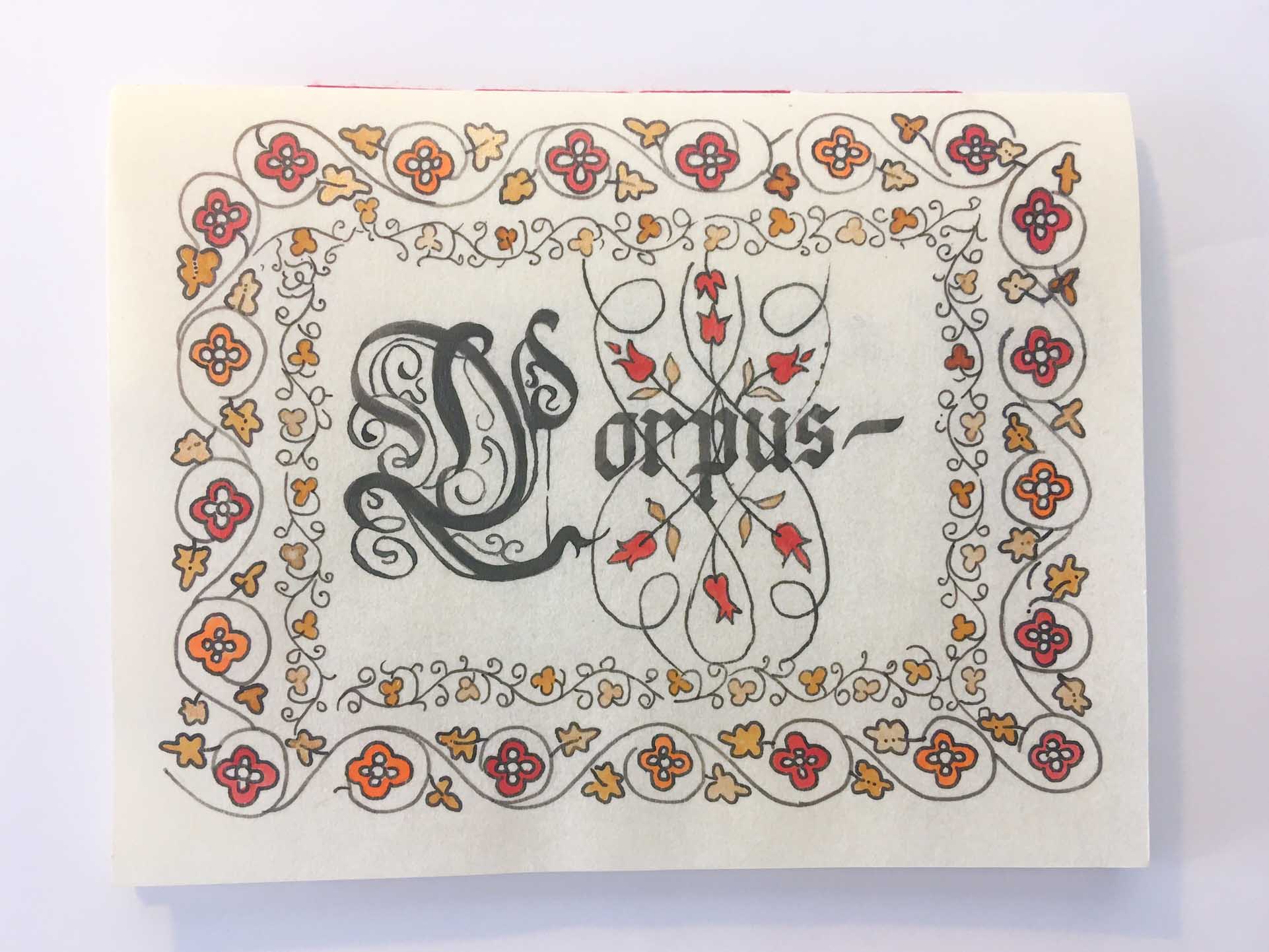
'Corpus', poem hand illuminated on handmade parchment booklet, 140 x 110mm
© Werner Ungerer, 2021
FOUR
Try to find creative outlets other than calligraphy work. I like making little artist books (no bigger than A6) in which I just doodle, make collages, mess around with paint – really mindless, play stuff. I also like taking photos – it’s instant and requires no careful planning. Cultivate creative outlets that are not concerned with 'getting it right'. Draw with charcoal – a medium that is hard to control, that makes a mess. Better yet, make your own drawing tools and play with them. Things that I implement in more serious work very often come from pure experimentation during play sessions.
FIVE
I am worried about how this is going to land, but calligraphy has a very strong spiritual aspect. It is the ultimate in forcing focus and attention into the present moment. If you are looking to feel more grounded, more present, I can think of nothing that will give you deeper satisfaction. We admire the works of the ancient scribes – all monks, basically. They spent their days in quiet spaces, working. It is beneficial to be alone and to focus on only one activity for a while. Embrace your spirituality. Our work may not be perfect, but we are aiming for the Divine. We are making light.
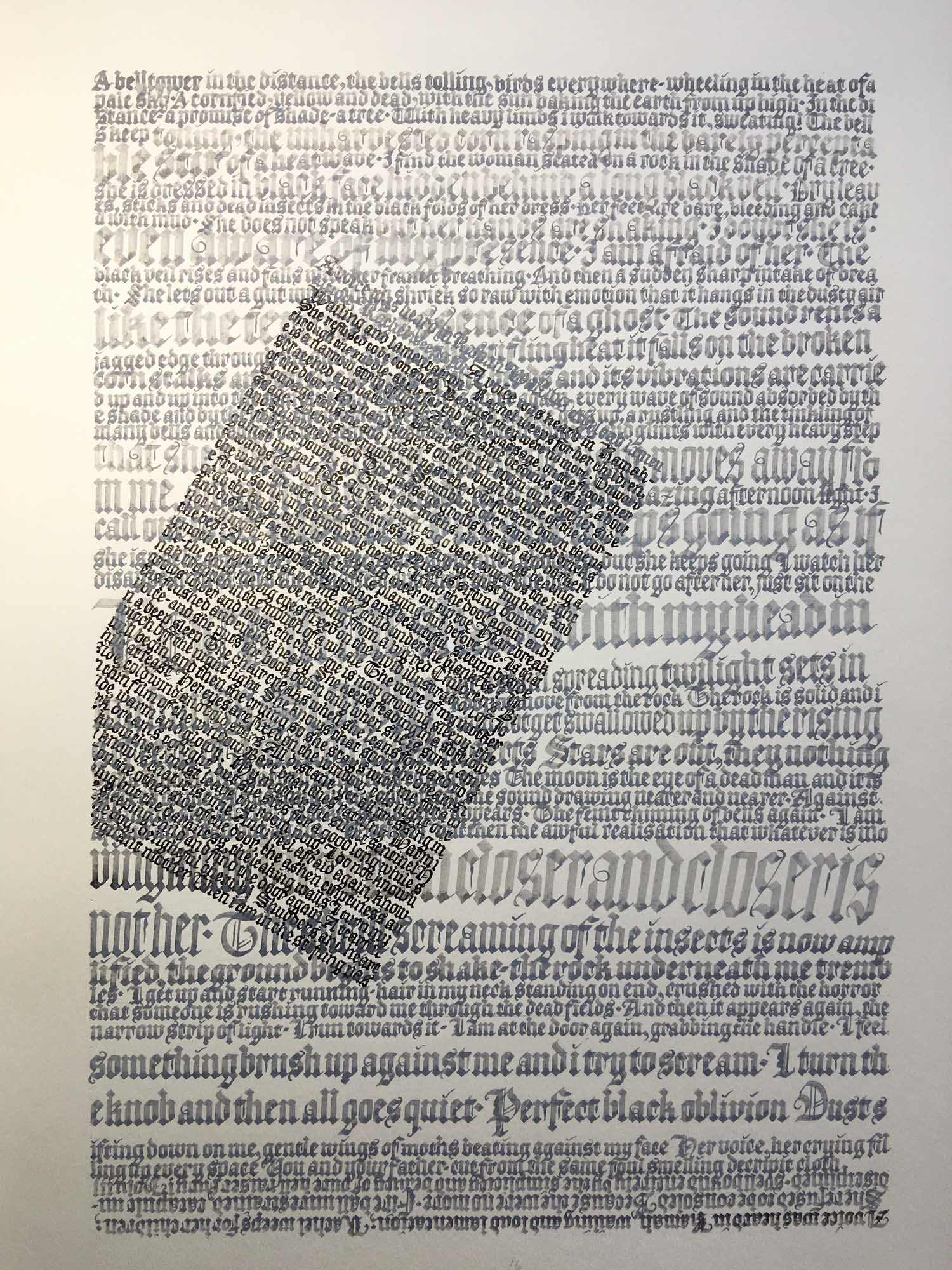
Detail from Contra Natura, Chapter 16: 'Mother II', 297 x 420mm
© Werner Ungerer, 2013
SIX
Use your Modern Calligraphy worksheet if you must, but try and figure out how to make it your own, how to personalise it. This applies to all the calligraphic hands. Is uniformity, the exactness that Perfectionism asks, interesting? An odd thing happens to the eye when it focuses on a thing that is perfect. It dismisses it.
Yawn yawn to all those perfect penmen.
SEVEN
Allow yourself to be a beginner. Be curious, not critical. Check yourself all the time. Whatever is going on in your head, is this you, is it fair? Is there a minty hint of cruelty? Unspool the tape.
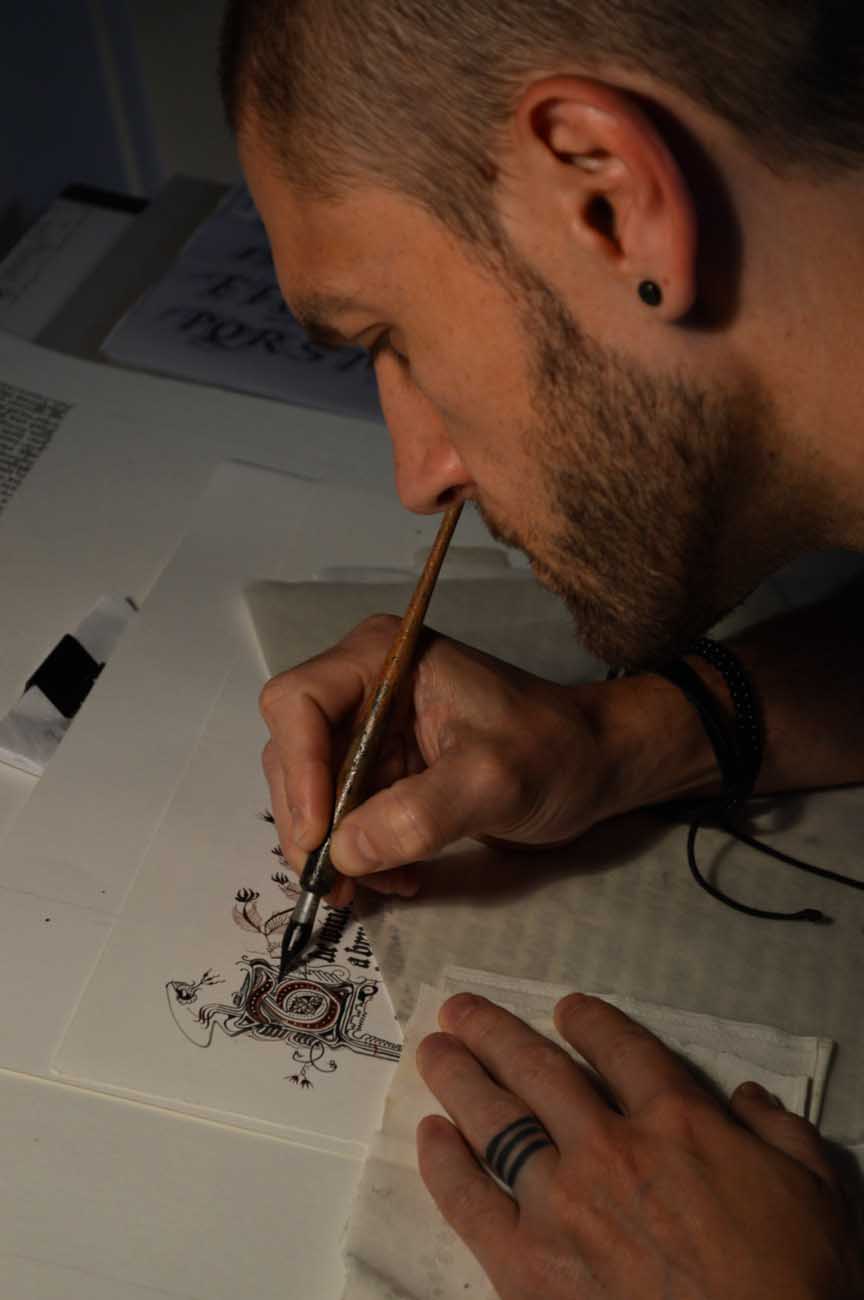
© text & images Werner Ungerer, 2021
Find more at Werner's website or via Instagram: werner_stefan.